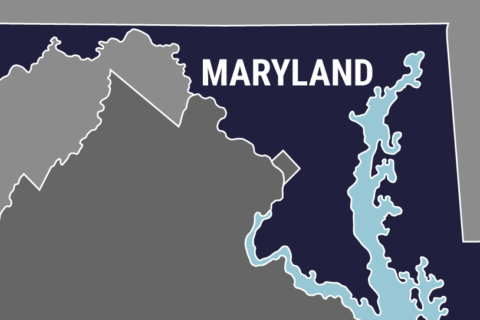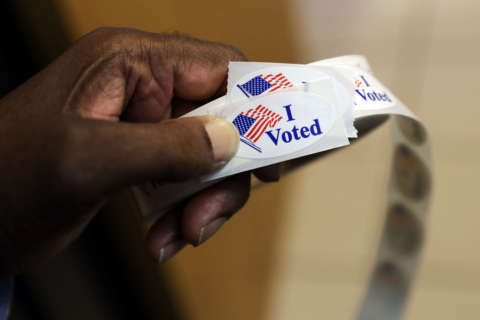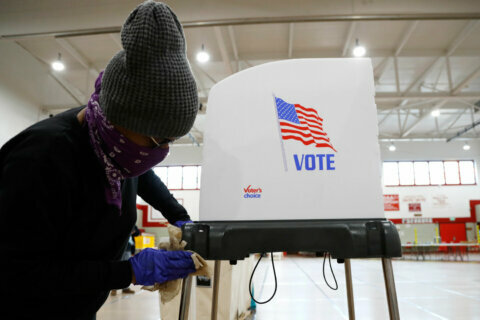WASHINGTON — While turnout surged in many parts of the D.C. region compared with a typical midterm election, it fell short of a presidential year turnout.
Virginia statewide turnout appears to be around 58.6 percent, a significant increase from 41.6 percent in 2014, but well below the 71.1 percent and 72.1 percent turnouts for the two most recent presidential elections. Statewide turnout last year in the 2017 race for governor was 47.6 percent.
In the District, initial turnout numbers from early and Election Day voting is around 44 percent.
In Maryland, turnout before the counting of absentee ballots is around 53.5 percent, up from 44.5 percent at this point in 2014.
Canvassing continues to check vote tallies and consider provisional ballots. Maryland elections officials will count absentee ballots in the coming days.
Virginia local breakdowns
In Virginia’s Senate race, Prince William County Board of Supervisors Chairman Corey Stewart lost his home county by a wide margin.
With a turnout there of about 57 percent of active registered voters, Stewart lost to incumbent Sen. Tim Kaine 63.7 percent to 34.35 percent. Libertarian Matt Waters picked up 1.9 percent of the vote, according to unofficial returns. Kaine won the race statewide by about 15 points.
In Arlington County, more registered voters cast ballots than in any other non-presidential election in the county’s history.
Over 70 percent of registered voters cast ballots, with the most significant increases in turnout appearing to be among younger voters along Columbia Pike and the county’s Metro corridors, the county’s elections officials said. The largest turnout and longest wait times in Arlington were in the morning.
In the commonwealth’s 7th Congressional District, Rep. Dave Brat has conceded to his Democratic challenger, Abigail Spanberger, who won significant margins in Henrico and Chesterfield counties, even as Brat won some less-populous areas like Culpeper County, Louisa County, Orange County and Spotsylvania County.
In the 10th Congressional District, where state Sen. Jennifer Wexton ousted Republican Rep. Barbara Comstock, Wexton won the Fairfax County and Loudoun County portions of the district by wide margins. Wexton narrowly won the Prince William County portion of the district.
Wexton’s win sets up a special election sometime in the next few months for her state Senate seat. Democratic Del. Jennifer Boysko announced her candidacy in the race Wednesday morning, and said she had the support of other elected Democrats who represent the area at the state level.
Fairfax County’s overall turnout this year was 69.8 percent, down from about 82 percent in the 2016 presidential race but far above a typical midterm election.
Turnout this year was highest in the Hunter Mill and Dranesville districts and lowest in the Lee District.
In Loudoun County, turnout was 65.9 percent. The last time that Loudoun County had higher midterm turnout was 1994, when 68.7 percent of 52,014 registered voters cast ballots. This election, the Loudoun County Department of Elections said more than 52,000 voters had cast ballots by 10 a.m. The county now has 255,872 active registered voters.
The city of Falls Church was one of the few locations to nearly match presidential-level turnout, with 74 percent voting in Tuesday’s election, just shy of the 77 percent turnout in 2016.
DC breakdowns
All incumbents were re-elected in the District.
The highest percentage turnout in D.C. appears to have been in Ward 3 (52.2 percent), while the lowest appears to be in Ward 8 (30.3 percent).
Ward 6 had the highest raw number of ballots counted so far, with 39,111.
The overall citywide turnout of about 44 percent is expected to rise somewhat as absentee and provisional ballots are counted.
In the at-large D.C. Council race, Elissa Silverman actually got a few hundred more votes than Anita Bonds in Ward 3 on her way to holding her seat. Dionne Reeder beat out Silverman only in Wards 7 and 8. Silverman beat Reeder by a narrower margin in Ward 5 than elsewhere.
Maryland local breakdowns
While Maryland still has many absentee ballots to count, turnout in Montgomery County appears to be slightly above the statewide average.
About 1 percent of voters cast ballots for governor in Montgomery County, yet left the county executive race blank on their ballots.
In Prince George’s County, turnout was a bit below the statewide average, at about 51 percent so far.
In Frederick County, turnout was higher at around 57 percent before absentee ballots were counted.
Howard County — with a competitive county executive race and generally wealthier residents who appeared more likely to turn out this year in many areas — saw at least 62.3 percent turnout.
Democrat Calvin Ball won the county executive race by about 6,000 votes prior to the counting of absentee ballots, while Republican Gov. Larry Hogan leads Democratic challenger Ben Jealous there 56.9 percent to 42 percent.
In Anne Arundel County, turnout before the counting of absentee ballots is around 55 percent.








